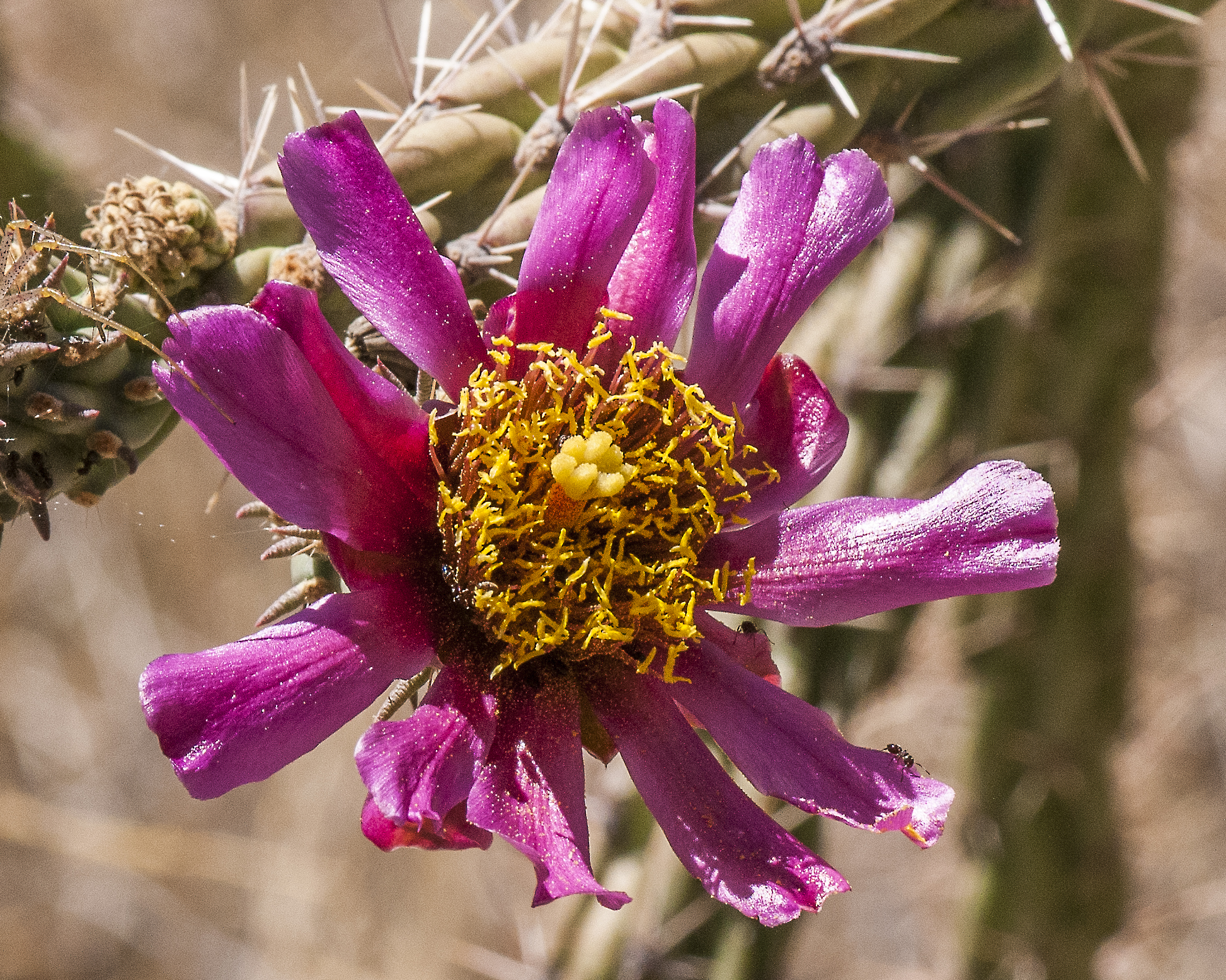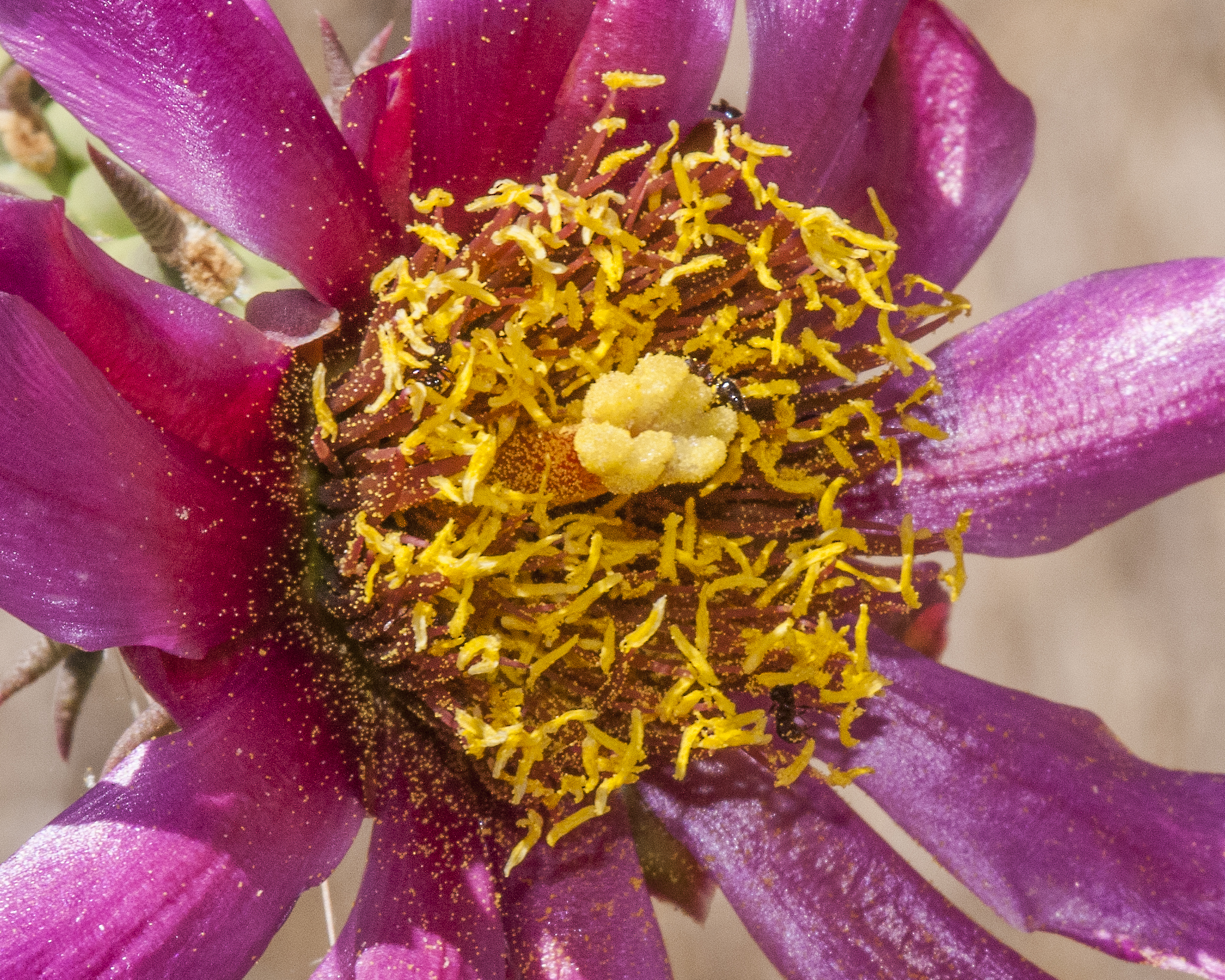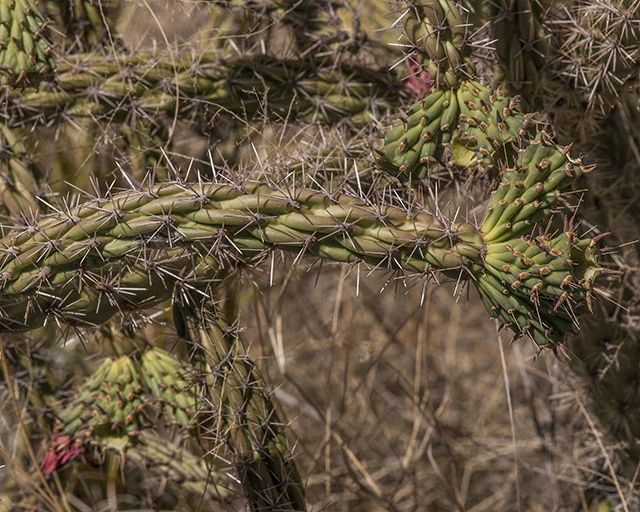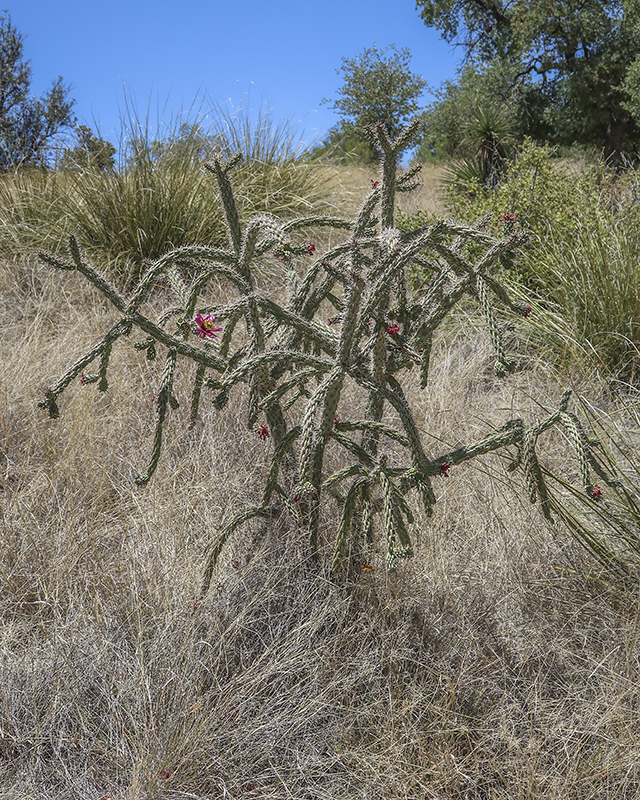Wildflowers of Southern Arizona
Cane Cholla.
Cylindropuntia spinosior .
Cactus (Cactaceae) family.
Duration: Perennial. Protected Status: Salvage restriced status in Arizona. Spines: 10-20 per areole, spreading in every direction and interlacing with the spines of adjacent areoles, barbed and pale tan or pinkish to red brown with whitish sheaths, they are long persisting but not baggy with basal spines that are erect to mostly deflexed, with distal spines erect-spreading. Flowers: Purplish generally, but color varies considerably, the tepals 4.5-20 mm long and 6-12 mm broad, with small notch at the tip, the anthers are yellow and the style usually purplish. Fruits: Bright lemon yellow berry that is fleshy at maturity, spineless and obovoid but strongly tubercled, 2.5-4.5 cm long, falling off in March. Ecology: Found in desert grasslands, flats, valleys, and plains from 2,000-6,500 ft (610-1981 m), flowers May-June. Distribution: AZ, NM; introduced in Australia. Notes: A medium to large, arborescent, branching cholla distinguished by having stem joints firmly attached to eachother and whorls of short joints growing a right angles to stem; gray to purplish gray spines which do not obscure stems; rose to magenta flowers; spineless fruits with conspicuous tubercles. Ethnobotany: Papago pit baked buds, fruits and joints considered a staple food. Etymology: Cylindropuntia is from Greek kylindros or a cylinder, plus the genus Opuntia, while spinosior is from the Latin for spiny.
Santa Catalina Mountains
Molino Basin
Location: 50 feet south of campground road just past RV campsite 17.
6/14/17
See SEINet Pictures and Description
See FireFly Forest Pictures and Description





